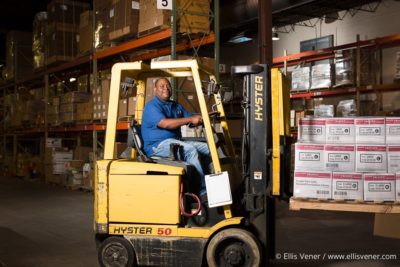 Workforce is having a moment. There is real potential for an unprecedented infusion of resources to support state and local efforts to engage employers and ensure workers have pathways to good jobs. The Biden Administration’s American Jobs Plan and American Families Plan, as well as the U.S. Innovation and Competition Act, are important signals of potential workforce investment.
Workforce is having a moment. There is real potential for an unprecedented infusion of resources to support state and local efforts to engage employers and ensure workers have pathways to good jobs. The Biden Administration’s American Jobs Plan and American Families Plan, as well as the U.S. Innovation and Competition Act, are important signals of potential workforce investment.
To make the most of these resources, we must adopt the principles core to co-investment: cross-sector, cross-office, cross-organization, cross-you-name-it stakeholders with a common purpose sharing ideas, priorities, expertise, and money to advance goals. It is only with this collaboration that we ensure the equitable distribution of resources supporting new innovations and proven activities.
Here’s just a taste of what we are seeing in our Network when it comes to co-investment. These ideas can help local communities act today to prepare for a big investment in the future.
Align stakeholders with data
Atlanta CareerRise developed an Economic Mobility Dashboard to align five workforce boards of the greater metro Atlanta region on the experience of workers in the region. Most importantly, the dashboard includes data disaggregated by race and gender, which identifies some of the disparities experienced by workers. Using this data, CareerRise conducted Data and Disparity Workshops for the entire region and the individual workforce boards to highlight opportunities to advance equity goals regionally. Aligning on data is neither easy, nor sexy, but is key to updating the performance goals that drive our work. Want to take it further? Couple your disaggregated data with information about the historical actions and policies that help to explain today’s outcomes. These redlining maps are but one helpful resource you could dig into.
Involve workers to bring data to life
A stakeholder that needs to be included in any co-investment effort related to workforce is … workers. They are often the first to be overlooked. Sometimes this is intentional, sometimes it’s not; often it can be challenging to figure out the logistics. Enter the Centering Community Voice Blueprint developed by United Way for Southeastern Michigan and Detroit Future City. This guide helps users understand the why and how of incorporating lived experience into decision-making, particularly for grantmakers. There is value in authentic engagement. Any co-investment effort needs the voice and expertise of workers at the table to truly drive change. It’s time for our workforce initiatives to recognize this and invest in higher-level engagement of workers beyond surveys and focus groups. Check out the tools and resources in the blueprint to get started.
Build on what you already have going on
PACES, in Wichita, Kansas, is engaged in developing a community-wide plan for use of national recovery funds. A group of stakeholders (including the Chamber, philanthropic institutions, higher education, local and state government, among others) first developed the Air Capital Commitment to address layoffs related to the December 2019 Boeing 737 production pause. In March 2020, during COVID, the group expanded its focus to PPE, testing, and vaccines. The group has further evolved its purpose to now form task forces, including one for workforce, to develop plans for the American Recovery funds that are coming to the city, county, and state. Additionally, they are coordinating with their federal representatives on ongoing needs for future policy and funding. This group of cross-sector stakeholders formed in the wake of a workforce crisis continues to see the value of aligning their efforts to design major workforce breakthroughs with intention.
What’s next?
People talk about “getting out of siloes” as if it’s easy. It’s not. There are politics, a mindset of scarce resources, and emotional exhaustion. But there’s no getting out of the same way of doing things without shaking it up. And the shakeup starts with a phone call, a conversation over coffee, another zoom call.
So, get in touch with someone in your community who you haven’t spoken with in a while. Ask them:
- What are you up to these days?
- What feels important to you?
- Where do you need help to make your goals a reality?
Share your answers to these questions (even if they don’t ask) and find out who they know that you should speak with next. It might just lead to somewhere.



